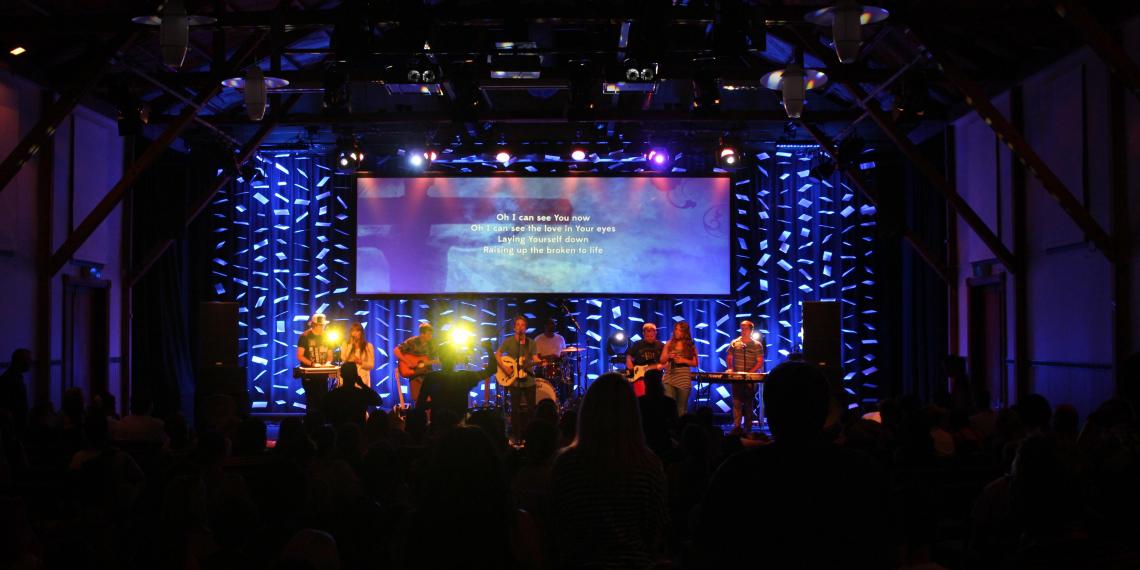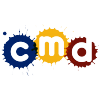Amplify Stage Design: 2015

Amplify stage design is always a challenge. What can we create that is different, versatile, and that will add to the worship experience? This year, we based the back wall of the stage design off someone else’s design (yeah, all good design is mimicked right!), so credit for the falling cards idea goes to another church, who you can find on churchstagedesignideas.com.
Falling Cards:
The falling cards are simply just that — pieces of cardboard made to look like they are falling. This simple, yet rather time consuming idea is fairly straight forward. We chose a material that was lightweight and white on both sides — the ultimate decider for this was something that was in stock and reasonably priced. Our research found a company that could provide 2mm thick pieces of cardboard, white on both sides and cut to size. The next step w
as to figure out how many pieces were needed. By creating a test section and using a bit of math, we figured out that we would need 36 columns of 20 to fill the back wall.
Also, because we were putting up a big screen, we needed to take out 5 cards each from 16 of the columns, in order to leave us with enough blank space to place the screen. This meant we needed 640 cards in total. We ordered 700 pieces of 120mm x 240mm, 2mm thick cardboard, white on both sides. Nylon was threaded through the center of the cards, and they were hot glued on the underside at regular intervals (240mm). They were then hung at regular intervals (300mm) by tying them to a piece of rigging along the top of the stage. Because each card isn’t perfectly balanced (and with the constant movement of the nylon), the cards hang at different angles — giving the falling cards look.
Screens:
Wide screens are good! Even wider screens… why not? We hired a screen that was 6m x 2m. Because of its width, we had two identical projectors side-by-side and used a tool called “edge-blending”. Simply put: this eliminates a visible gap/overlap from the two projectors so that the final image looks like one. Our operators used ProPresenter from a laptop to control the lyrics, videos and graphics.
Lighting:
We had 8x LED Colorado Batten 144s lighting up the falling cards. This gave us the ability to change the colour on the cards — we could make them a solid colour or a mix of colours. 6x LED Colorado Zoom Tours lined the top of the screen and focussed towards the front of the stage.
These were mainly used as backlighting. However, at one point we did have only these on, set to a thin beam, which looked pretty cool! There were another 4 of these coming in from the side. We then had 8x Chauvet QSpot 560s, 4 hung above the stage and 4 on truss stands along the back. These are movers that allowed us to add movement and interesting patterns to the stage.
Finally, we had conventional lighting for the stage wash and house lights. This was all programmed and controlled via a Road Hog 3 lighting console.
If you would like to recreate this backdrop in your Corps setting and need help, let us know and we can provide you with links to our suppliers and answer any in depth questions you might have!

